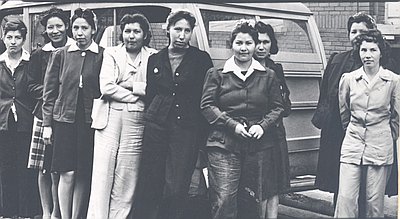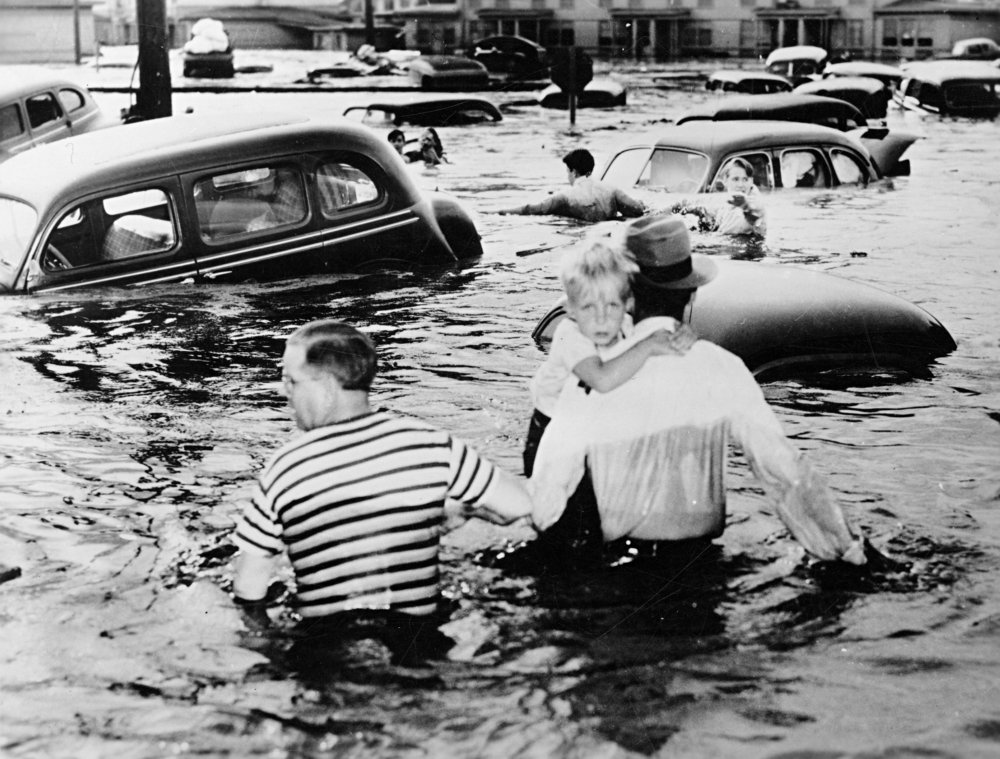103 results

Tap Root, Figures that Tell Facts at Elkton
After Japan attacked Pearl Harbor on December 7, 1942, most Oregonians approved of the United States' entry into the Second World War, but support was …
Beatrice Marshall's Oral History
Beatrice Marshall was interviewed by Christine Poole and Madeline Moore as part of the Northwest Women’s History Project. In this transcribed excerpt of her interview, …
Klamath Homestead Drawing
Veteran homestead lotteries were established after World War I to reward soldiers and sailors with newly reclaimed land in the Klamath Basin. There were five …
German POWs, 1944
During World War II, the United States War Department established approximately 150 prisoner-of-war (POW) camps to contain nearly 340,400 German POW’s. The War Department ordered …
Cross-dressing Performers at Music Hall
This photograph of cross-dressing performers at Portland's Music Hall ran on the first page of the May 17, 1950, edition of the Oregon Journal. …
Log Truck Stirs Dust through Clearcut
This undated photograph from the Timberman is identified as being from the Pacific Northwest. Although the title accompanying the photograph in the collection identifies the …
War Memorial, Lake County
This monument was erected at the Mitchell Recreation Area in the Fremont National Forest, Lake County, Oregon in memory of Elyse Mitchell and five children …
Native American women from Chemawa train to work in shipyards
When the labor market opened up during World War II, more than 65,000 Native Americans worked for war industries or joined the armed forces. Historian …
Oregon House Joint Memorial Number 9
Oregon State House representatives Vernon D. Bull (Democrat-La Grande), Warren Erwin (Democrat-Portland), and Rose M. Poole (Republican-Klamath) issued this joint memorial Feb. 28th, 1945. The …
Margaret McLeod's American Red Cross dog tags
Three million women had volunteered for the American Red Cross by the end of World War II, serving in various medical and support capacities throughout …Interpretive Essays
Interpretive essays use primary documents from the Oregon Historical Society archives to help readers imagine the events, people, and issues that shaped Oregon history.



